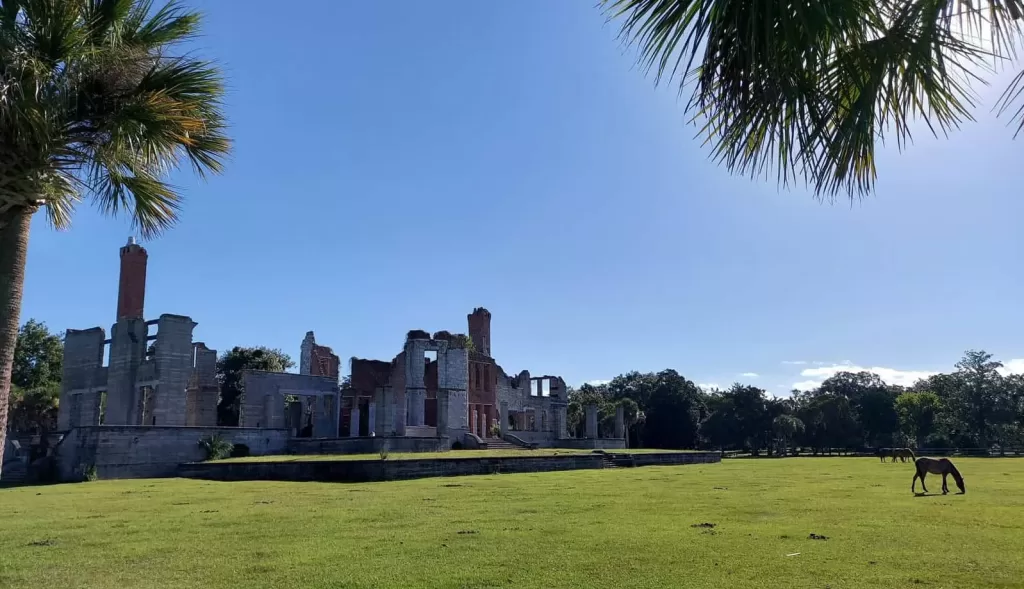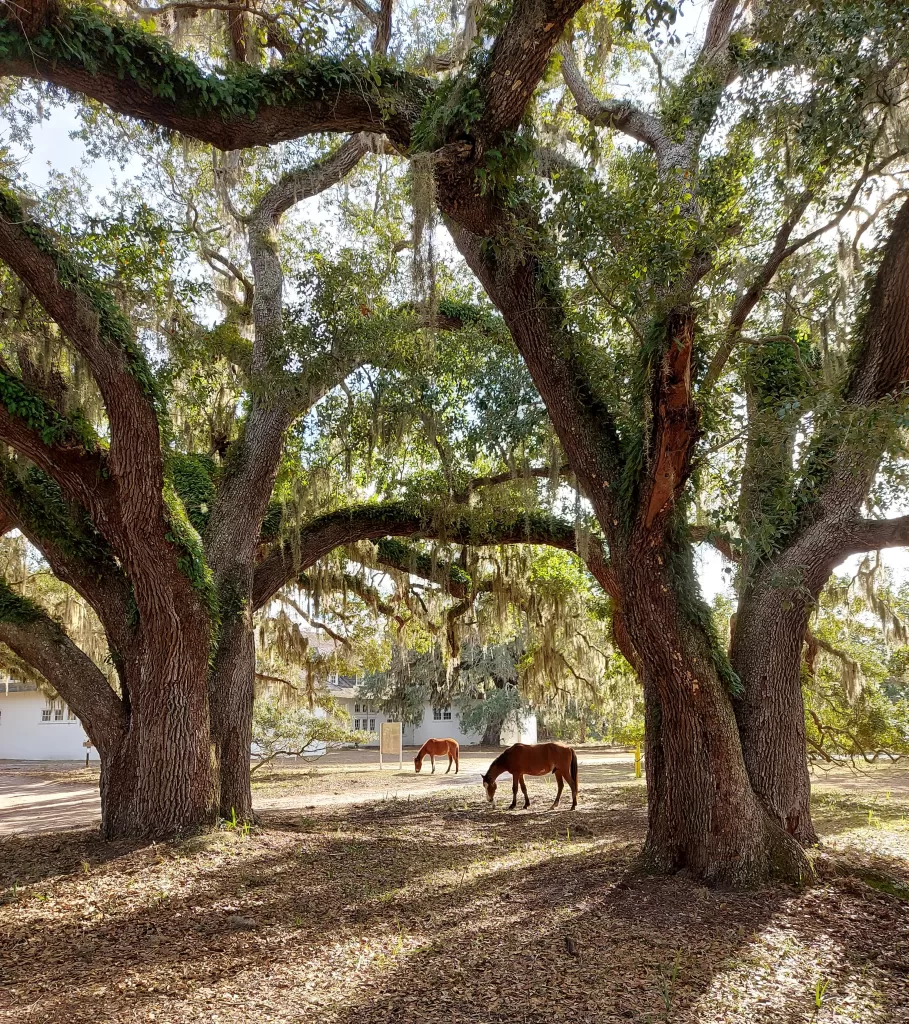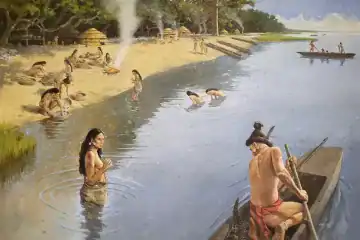Cumberland Island’s Horses: A Piece in the Puzzle of Horse History

Visitors come from far and wide to visit Cumberland Island in the hopes of glimpsing its famed wild horses. As you take in the awe-inspiring sight of their grazing at Dungeness’ imposing ruins, you may wonder how they arrived on this island. Their background is connected with horses’ overall history and migration to North America. To discuss the story of Cumberland Island’s horses, we must start at the beginning.
Oh Hey, Eohippus
The first ancestors of modern horses, known as Eohippus, were small, dog-sized, forest-dwelling creatures. They lived around 50 million years ago in present-day North America. Over time, these early horses evolved into larger animals, developed a single hoof from multiple toes, and adapted to grazing on the vast grasslands across the continent.

By around 10,000 years ago, horses became extinct in North America. This was due most likely to their migrating across the Bering land bridge into what is now Siberia. From there, they spread west across Asia into Europe and south to the Middle East and Northern Africa. Therefore, by the time European explorers arrived in the New World, horses had disappeared from the continent.
Domestication of horses probably began around 4000 to 3500 B.C. in Central Asia, particularly among the nomadic Botai culture in present-day Kazakhstan. From being simply pack animals, horses went on to revolutionize transport, trade, and warfare. By the time horses arrived in the Americas, they had already played a central role in the development of civilizations and empires such as those of Persia, Greece, and Rome.
American Homecoming
The return of horses to North America began in the late fifteenth century with European explorers’ arrival. On his second voyage to the New World in 1493, Christopher Columbus brought horses with him to the Caribbean islands. These horses were the first to set foot on the Americas in over 10,000 years.
However, it was the Spanish conquistadors, particularly Hernán Cortés and Francisco Pizarro, who played a crucial role in reintroducing horses to the North American mainland. In the early 16th century, they expanded Spain’s empire into the Americas, using horses for transportation. These animals also became a symbol of Spanish military superiority, as the sight of mounted cavalry struck fear into indigenous populations.
In the southwestern United States and northern Mexico, descendants of these Spanish horses began to roam free. Over time, they formed wild herds, contributing to the development of the Mustang, one of North America’s most iconic horse breeds.

Not Just Horsing Around
The role of horses in shaping North America cannot be overstated. They became integral to Native American culture, enhancing hunting efficiency and warfare tactics and allowing for the establishment of vast trade networks. For European settlers, horses were vital for farming, transportation, and trade, contributing to the expansion of colonies into the interior of the continent. They played a crucial role in the development of the American frontier.
Coming to Cumberland
According to legend, Cumberland Island’s horses, too, arrived on the island thanks to the Spanish. Allegedly, a Spanish ship wrecked off the coast of Cumberland, and the horses from that ship swam to safety on the island. Whether or not that story is true, it is likely that early Spanish missionaries were the first to bring horses here as early as the 1560s.
The earliest official account of horses on Cumberland Island was in 1742, when the Spanish attacked British Fort St. Andrews and found 50 or 60 horses in a corral. They claimed to have shot the horses, but some biologists believe the faster ones escaped to form the nucleus of the feral herd.
The Carnegies, who inhabited Cumberland Island in the late 1800s and had a passion for horses, experimented with improving the feral herd. They paired them with an assortment of breeds, such as Western mustangs, Arabians, and quarter horses. Their most notable import was a white stallion from the Imperial stud farms of the Russian Tsar.
Horses are among the most iconic and influential animals in human history, having had a profound impact on the development of civilizations across the globe. How special for us in Southeast Georgia that we are able to enjoy a slice of that history with Cumberland Island’s feral horses!
Come see Cumberland Island’s wild horses for yourself and learn more about them on our Cumberland Island Walking Tour: Haunting Ruins and Wild Horses!



